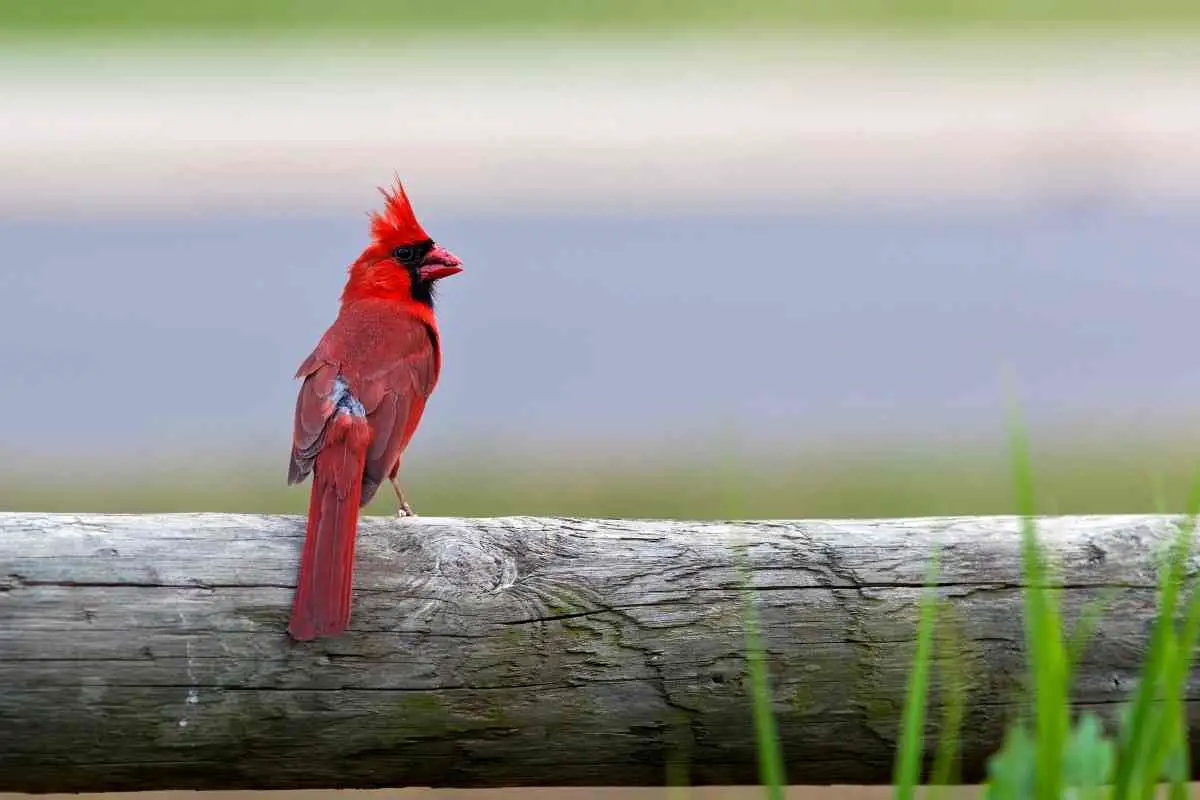Thanks to its mixed climate consisting of forests, grasslands, and swamps, Ohio provides several natural habitats for birds.
Whether you’re an ornithologist or love bird-watching, you can see more than 424 different species in the Buckeye State.
Here are the most common backyard birds of Ohio.
1 – Northern Cardinal
The Northern Cardinal is Ohio’s state bird, a declaration that was made in 1933.
Males have bright red plumage with a black stripe around the beak.
On the other hand, females have a pale brown color, a sharp brown crest with red markings, and red beaks.
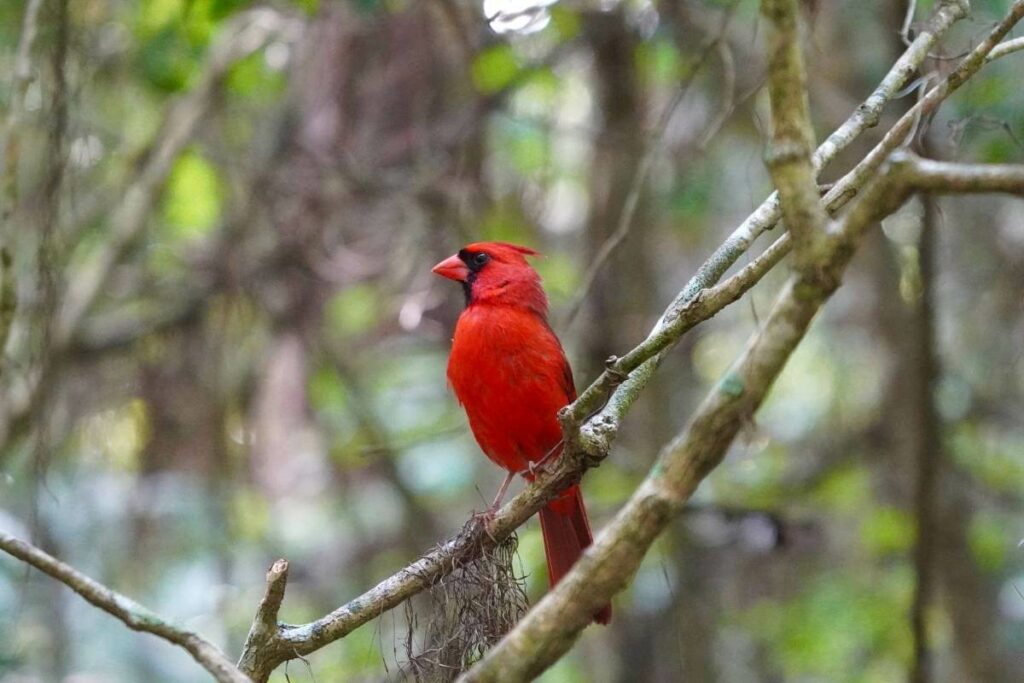
This species tends to be overly defensive during the breeding season. They can attack their own to protect their territories.
If you want to sight these beautiful birds in your backyard, place millet, milo, peanut hearts, and sunflower seeds in your bird feeder.
Northern Cardinals can also feed on hoppers, large tube feeders, platform feeders, and food scattered on the floor.
These medium-sized birds have an average body length of 8.8 inches and a wingspan of 12.2 inches. Their body weight ranges between 1.2 and 2.3 ounces.
2 – Blue Jay
Although it is native to North America, the Blue Jay has spread to other parts.
These birds live in woodlands and breed in the forests.
Regarding appearance, the birds have a blue and white plumage, which gives them their name.
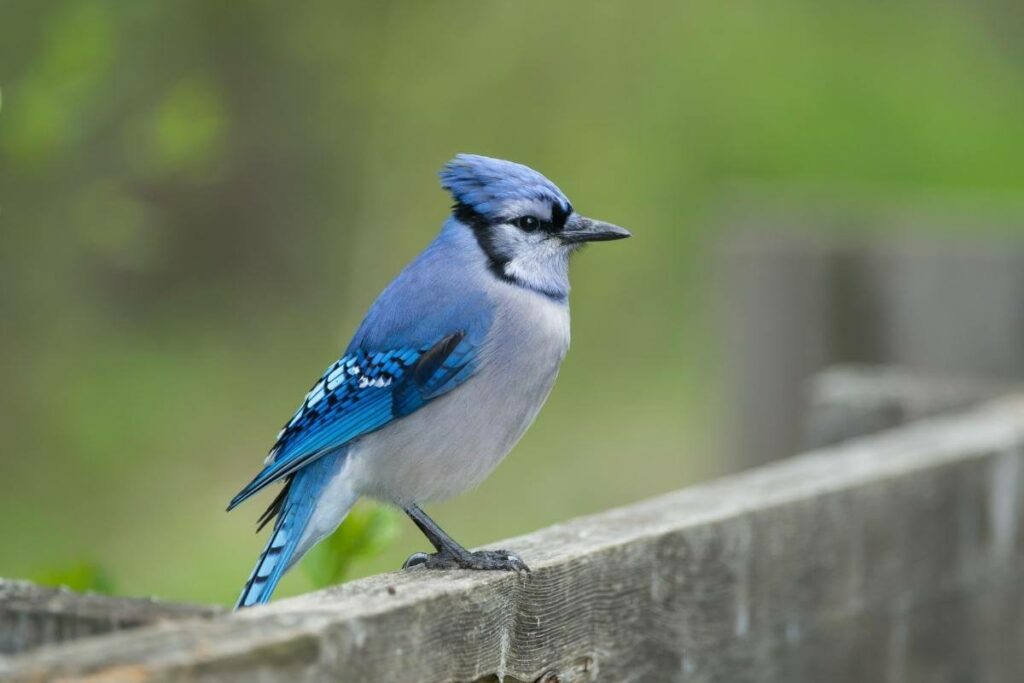
At the underside, the Blue Jay is white, while its back and wings are blue. You can spot this species at any time of the year.
Both males and females are similar in size, color, and shape.
The body length ranges between nine and 12 inches, while the wingspan ranges between 13 and 17 inches. They can weigh up to 3.5 ounces.
Blue Jays like eating berries, nuts, soft fruits, soft insects, seeds, and worms. During the breeding season, females protect the eggs and nestlings while the males hunt for food.
The young birds stay under their parents’ care for two months before flying into the wild.
3 – American Robin
The American Robin is native to the Northern half of the United States, but it migrates to the south during winter.
Its body shape and size resemble a Blue Jay.
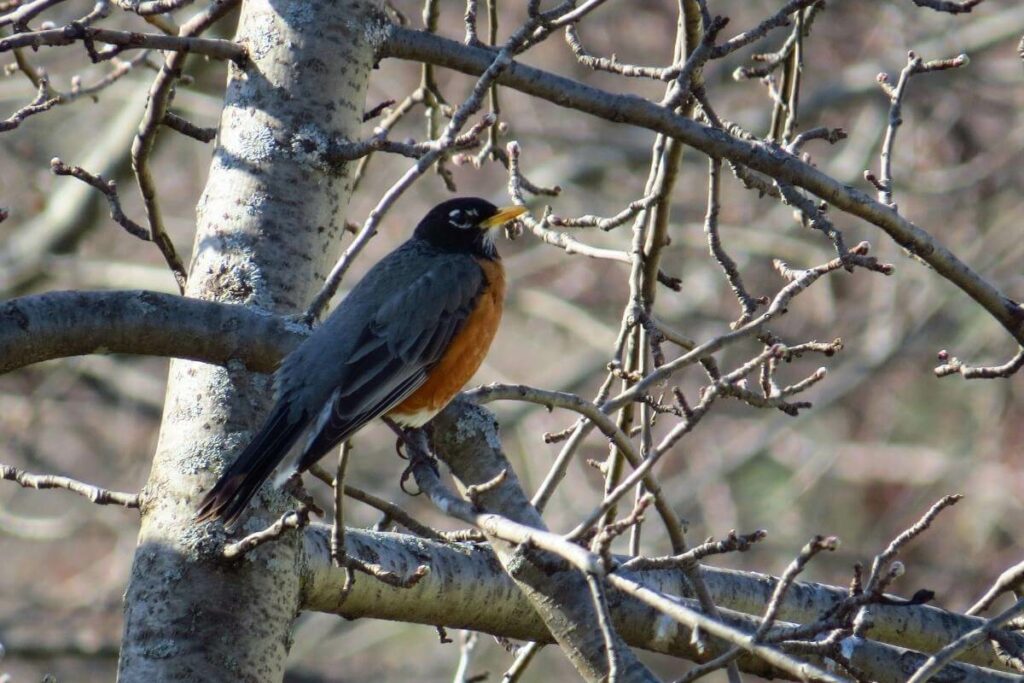
The only notable difference lies in the plumage, as its wings and back are gray and brown.
The underside of this species is rusty-orange.
These birds like living in open woodlands and farmlands. You can also spot them in urban parks and lawns.
They spend the hotter months in Northern US and winters in Mexico and other countries in Central America.
Eating Habits: Worms and other invertebrates are the preferred food for American Robins. Occasionally, they feed on berries and small fruits.
4 – Red-bellied Woodpecker
As the name suggests, this bird has a red belly.
Since it is a member of the woodpecker family, it likes tapping tree trunks using its sharp beaks.
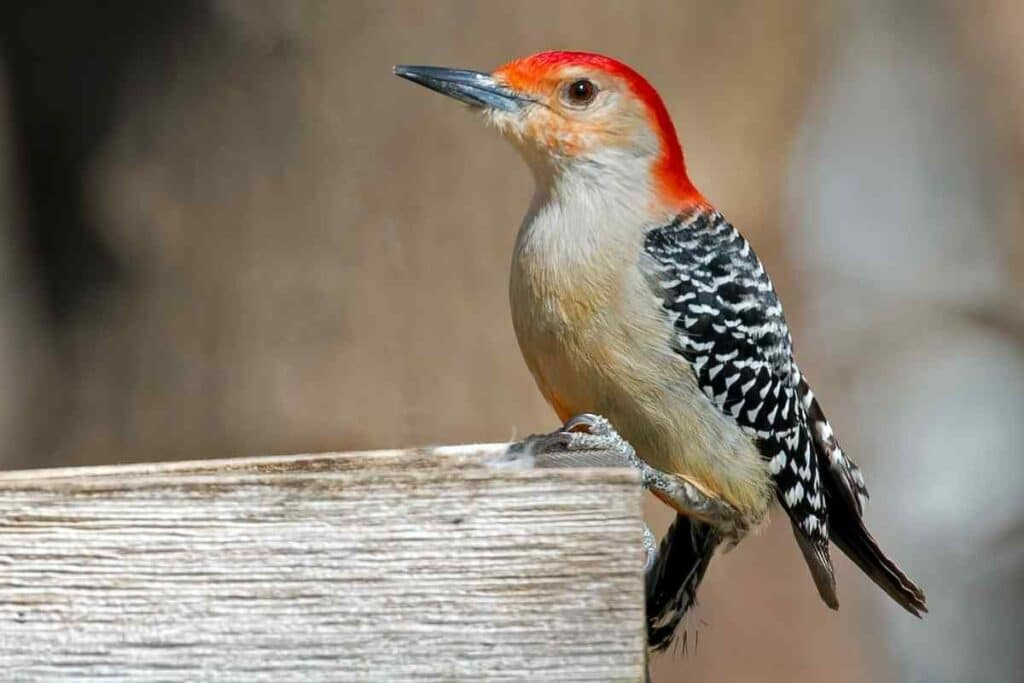
The Red-bellied Woodpecker has a red neck and head, while the back and wings are black and white.
During the breeding season, males produce high-pitched melodious sounds to attract females for mating.
The males have larger bodies than females, as they can weigh up to 0.3 ounces heavier than females. The same applies to the bird’s wingspan.
Like other woodpeckers, this bird has strong beaks that they use to create holes in trees. Red-bellied woodpeckers feed on berries, nuts, insects, and worms.
5 – Mourning Doves
Mourning doves have distinctively small heads, plump bodies, and long tails.
Their plumage is soft brown and has black spots on the wings.
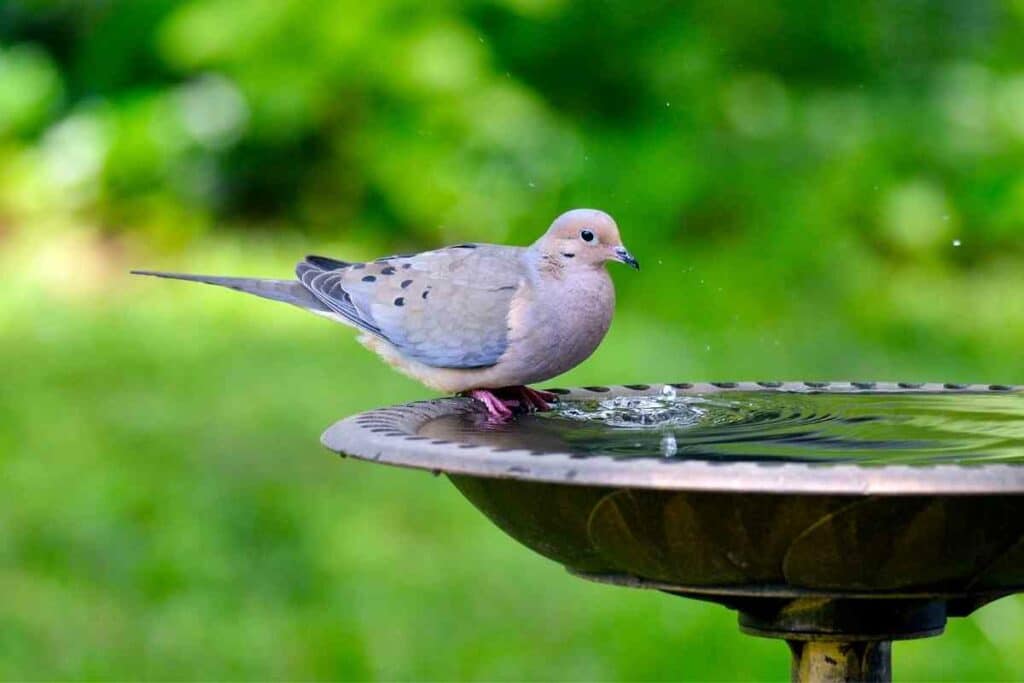
You can spot Mourning Doves in open woodlands.
When in urban areas, you can see them foraging the ground for food or perching on telephone wires to get a rest.
These birds are common throughout the year, but they might migrate south after the breeding season.
You can attract Mourning Doves to your outdoor space by scattering millet on platform feeders or the ground.
Other foods they can eat are cracked corn, peanut hearts, and sunflower seeds.
6 – Red-winged Blackbird
Red-winged Blackbirds have mostly black plumage, except for the red and yellow patches on its shoulder.
However, the females are duller, as they have a brown streak on their feathers.
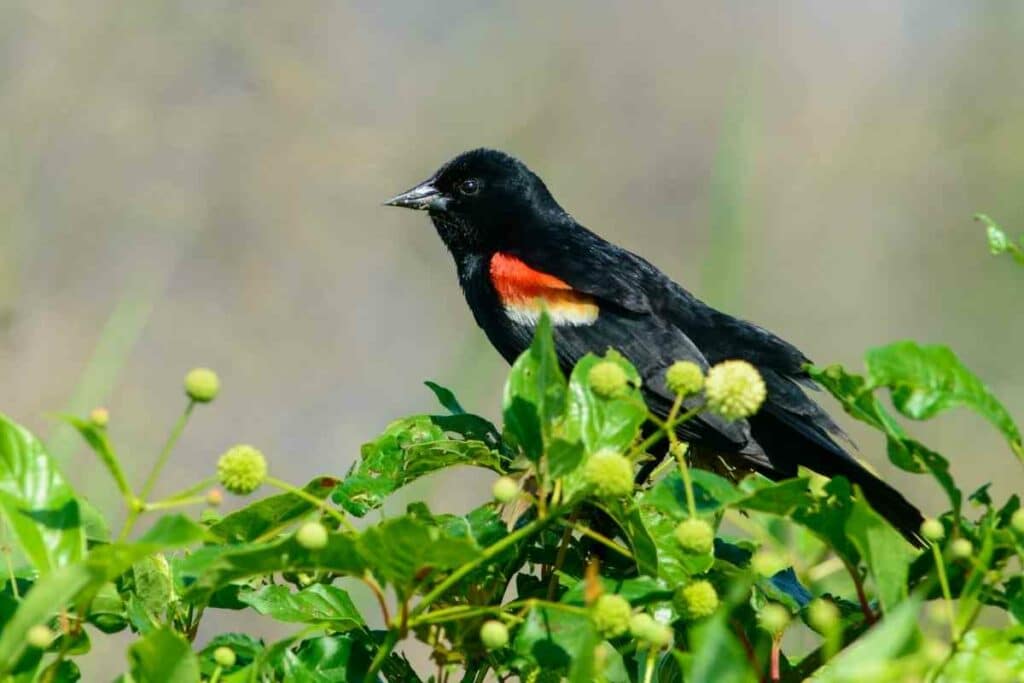
You can sight this species in many states across the United States, but they usually migrate south after the breeding season.
Like doves, they like perching on telephone wires. Males tend to be aggressive and protective of their territories, especially during the mating season.
They can even attack people who get too close to their nest.
The Red-winged Blackbird likes eating worms, small insects, and their larvae.
The plant-based material eaten by this species include berries, cracked nuts, and seeds of various shrubs and trees.
7 – House Finch
A native to the west, the House Finch, is now common throughout the United States.
It is renowned for its closeness to human beings, explaining why it is easy to spot in residential areas.
You can sight it at any time of the year.
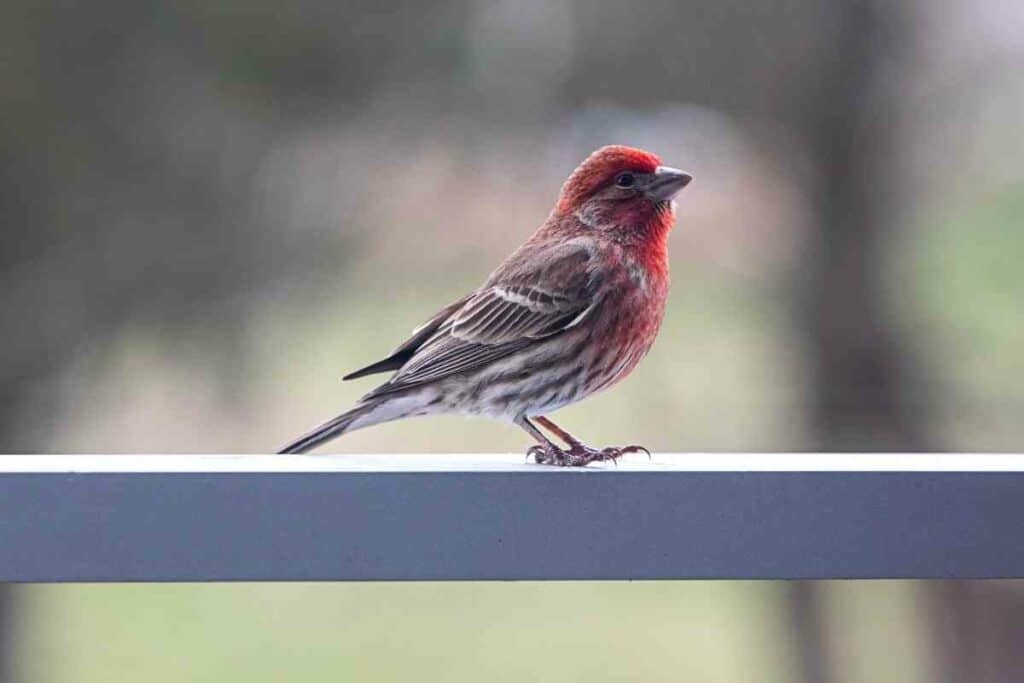
Male birds attract females for mating by producing a high-pitched sound.
This small-sized species has a wingspan of 10 inches and an average body weight of 0.7 ounces.
The body length of an adult house Finch doesn’t exceed six inches.
The difference between males and females lies in their color.
Males have brown plumage with dark brown markings on the wings. Contrarily, females have a gray and brown pattern on their feathers.
The preferred food for House Finches is small worms, small seeds, berries, and insects. You can lure them to your backyard by throwing cracked nuts and tiny seeds.
8 – European Starlings
Despite being a newly introduced species to Ohio, European Starlings have adapted well to the climate in this state.
These birds have plump bodies with glittering blue, green, and purple colors.
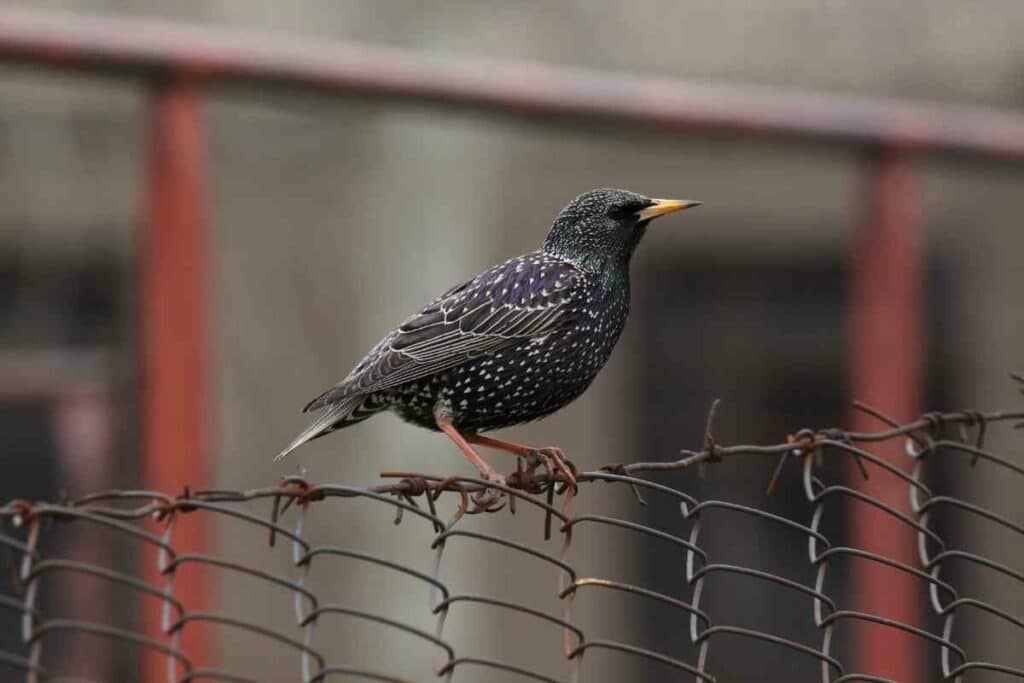
This species primarily feeds on insects and their larvae, such as beetles, caterpillars, earthworms, flies, and spiders.
They also eat fruits like berries, sumac, the Virginia Creeper, seeds, and grains.
However, some people consider European Starling as pests because they are aggressive and fly in large, noisy groups. They like flying over fields and perching on trees.
Place cracked corn, peanuts, suet, and sunflower seeds in your backyard feeder if you want these birds to come to you.
9 – American Crow
With an all-black body, the American Crow is among the most common birds in Ohio.
You can easily spot them perched on top of buildings, electricity pools, tall trees, etc. They produce an irritating, hoarse, and cawing sound.
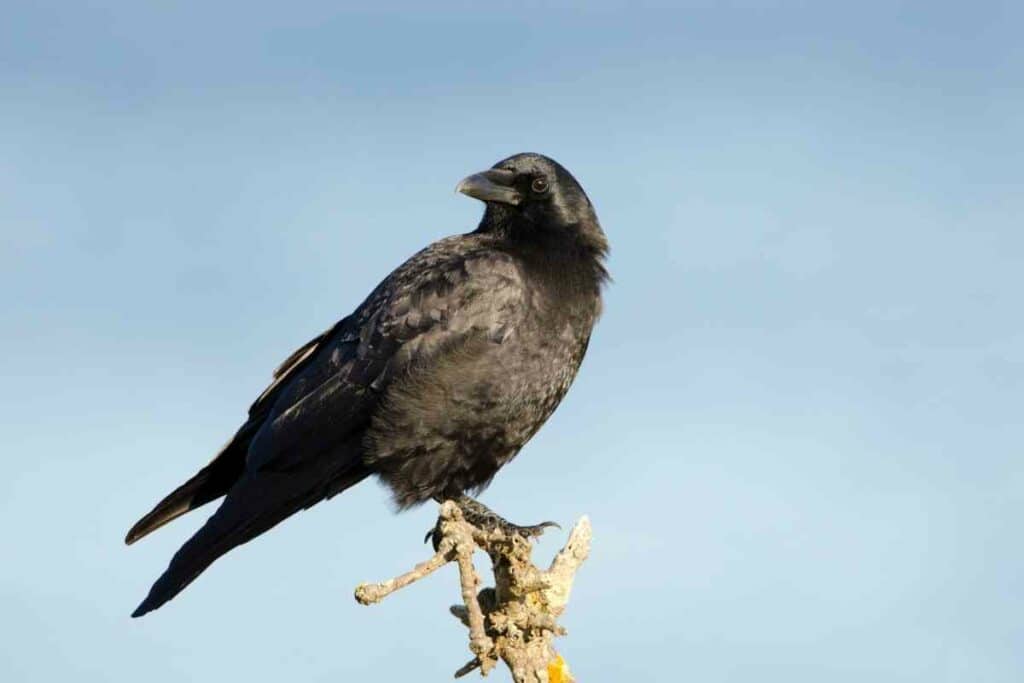
Crows mainly forage the ground for food, eating things like fruit, insects, seeds, and worms.
They also eat other birds’ eggs and nestlings, fish, young turtles, and mussels.
During winter, they gather in large flocks consisting of up to two million birds.
For Example: The best way to attract crowds to your backyard is by scattering nuts on the ground. However, this species can become a nuisance if you leave garbage outdoors.
10 – Belted Kingfisher
The Belted Kingfisher is a medium-sized species with a shaggy crest and a long, strong beak.
Its standout feature is a white stripe that runs around its neck, also known as its’ belt.’
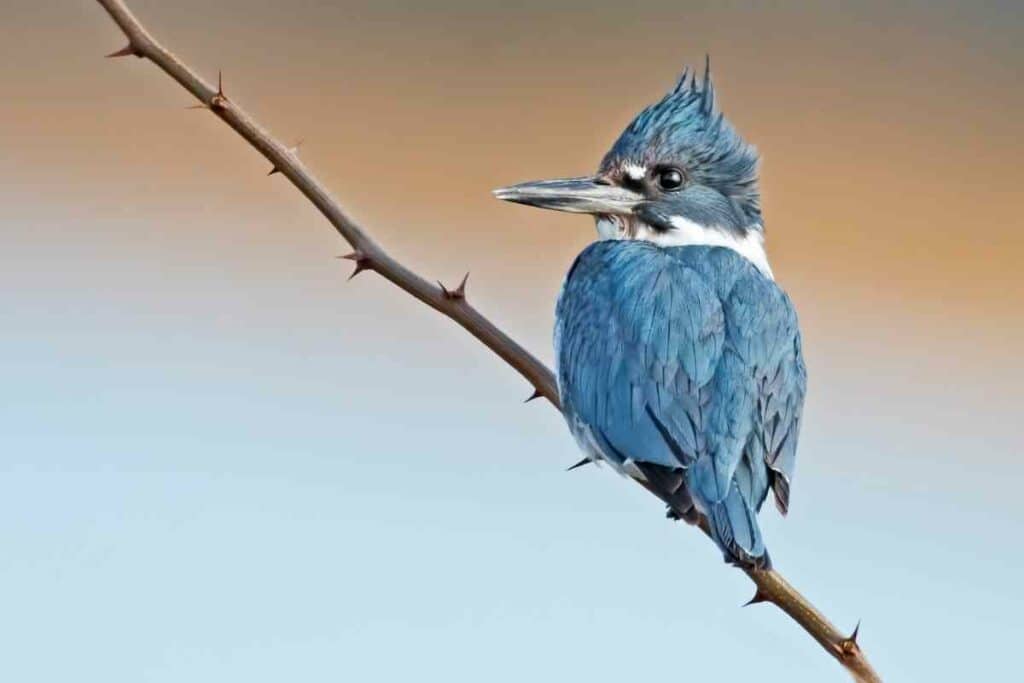
Females have brighter and more vibrant plumage than males. They have a slate blue head, the signature white collar, and a large blue band on the chest.
The underside is white, while the wings and back areas are blue and black with white dots.
Interestingly, female Belted Kingfishers are larger than males. The male can weigh up to 6.3 ounces, while the female can weigh up to 7.1 ounces.
The preferred habitats for this species are places near water bodies like canals, lakes, and rivers.
As such, they primarily feed on amphibians, insects, small fishes, small mammals, etc.
After laying eggs, the females sit on them until they hatch. During this period, the males provide food to their families.
11 – Tufted Titmouse
The Tufted Titmouse has large black eyes, a gray back, a white underside, and a stunning gray crest.
This species tends to ‘bully’ smaller birds when they encounter them in woodlands and open parks.
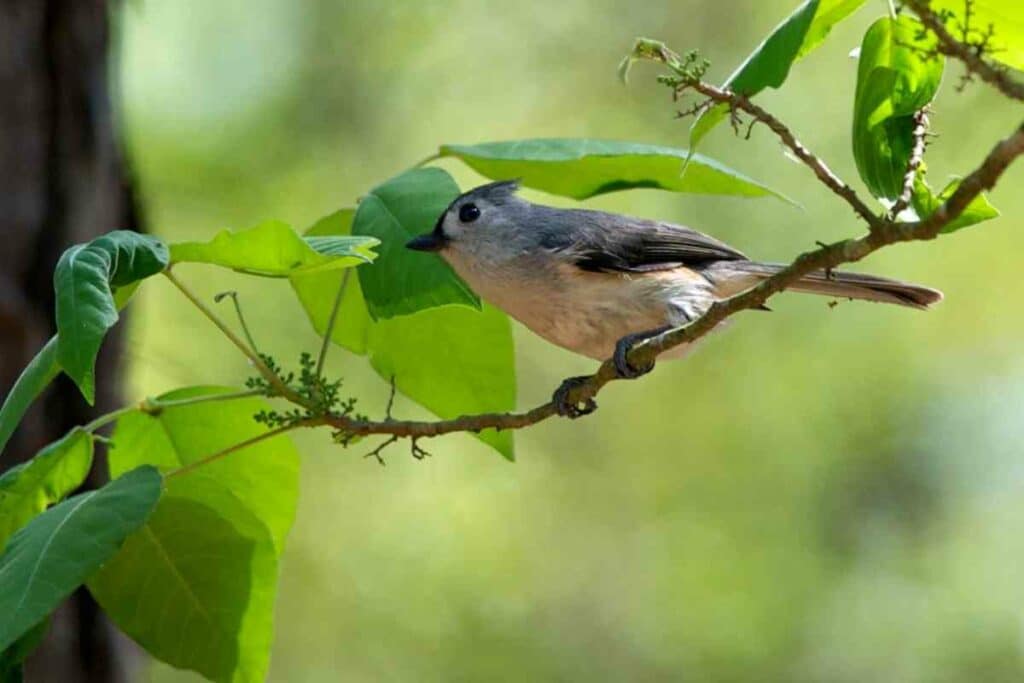
Ants, caterpillars, beetles, snails, spiders, and other small insects are the preferred food for Tufted Titmice. They also feed on berries, hoard-shelled seeds, and nuts.
To attract them to your backyard, use peanuts, suet, sunflower seeds in tube feeders. You can also try setting up a nest to attract males and females for breeding.
12 – Song Sparrow
Song Sparrows have predominantly brown plumage and like singing to attract potential mates during spring and summer.
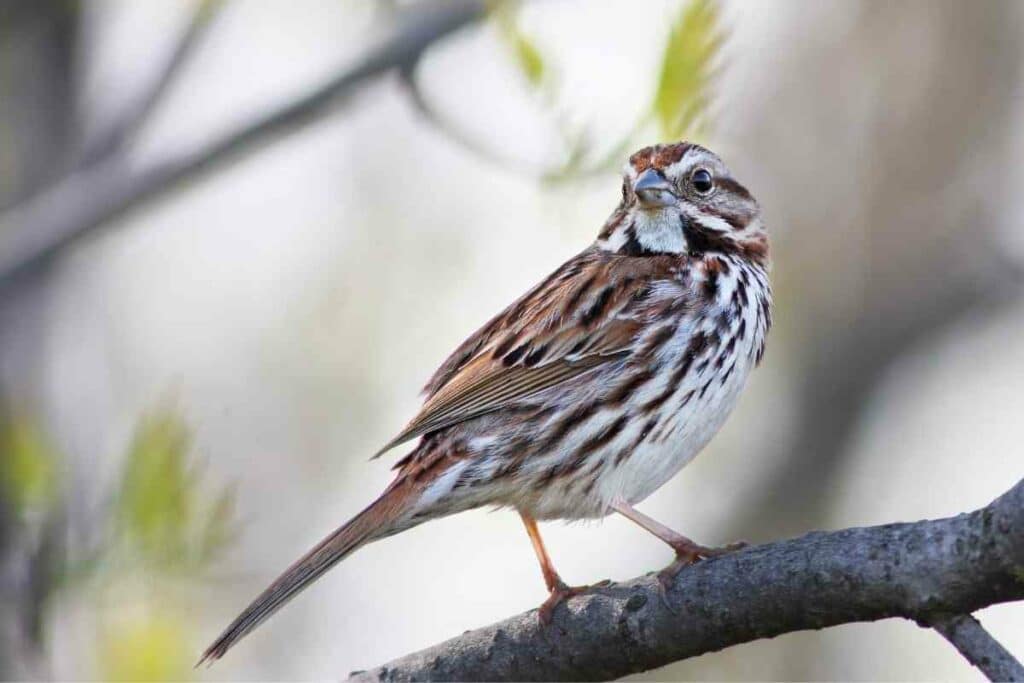
You can spot them in shrubby environments, as well as backyard feeders.
These species feed on plants and insects, including beetles, berries, cereals, worms, spiders, etc.
You can attract more birds to your backyard by placing cracked corn, suet, and sunflower seeds on your bird feeders.
Wrapping Up
The species described above are only but a few of the birds you can see in Ohio.
If you want to see as many as possible, visiting the state during spring and summer is a perfect time.
This is because most species migrate south to escape the cold winter conditions.
